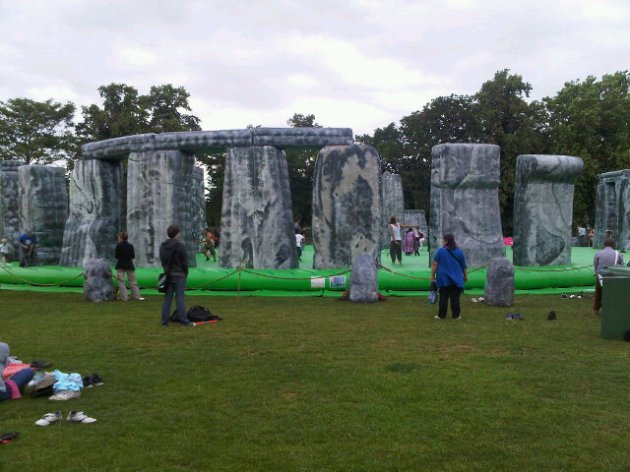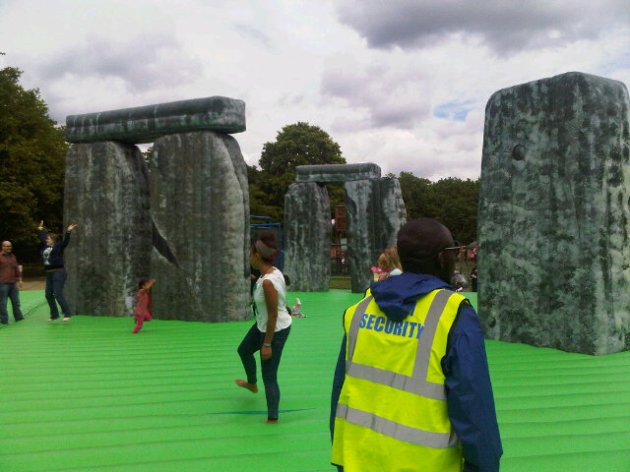Two recent encounters with contemporary art have made me think about how far we can define experience as ‘art’, or what kinds of experiences and reactions can still be labelled as ‘art’.
It’s a fairly big question and perhaps my meaning isn’t at first clear. This week I worked at Jeremy Deller’s bouncy castle, Sacrilege in East Ham park in Newham. The bouncy castle was incredible, literally the biggest I have ever seen, and there was a constant swarm of children, adults and young people bouncing around, giggling and play fighting.
Some people stayed for the whole day with the rare novelty of a free amusement. There were a crowd of twenty-somethings covered in knee-pads who had been following the castle around and seemed to be practising for some kind of new Olympic sport. As a social experiment/family day out I couldn’t fault Deller’s work.
I can’t deny that Jeremy Deller’s Sacrilege was an incredible piece of human experience. It brought happiness, it brought a community together, it had all the Newhamites gathered in the park when usually they might have just strolled through. Everybody who came was pleased with Sacrilege.
But although the rocks of Stone Henge were very well painted (I did stop to admire the detail on these springy standing stones) I couldn’t quite figure out what it had to do with art. The children and the parents all seemed unaware, Sacrilege’s bouncy irony passed them by. They were just enjoying the freebie, something to keep the children entertained during the holidays.
This is where things get particularly difficult. The week before Sacrilege I went to the Tate Modern to see Tino Sehgal’s Turbine Hall commission These Associations, a piece of performance art which Laura Cummings described in The Observer as ‘the most radical and humane of the all the Turbine Hall commissions to date.’
I didn’t quite do things right, I was a little nervous and a little hesitant. I wanted the performers to approach me. But they hummed passed and jogged passed and I didn’t get to hear any stories. My failure to participate isn’t the point. What I wondered was if people telling an audience personal stories was art? Is the experience of confidence and confession, as isolated in the industrial Turbine Hall, art? Or perhaps it’s only the fact that an artist has organised it, that it is happening within the walls of a gallery, and that we are conscious of its afforded status as art, that means that we can define it as art? If you took away Jeremy Deller’s name from Sacrilege nobody would even be raising the question.
Art has always been deeply connected to experience; the way a painting or a sculpture makes us feel is significant and intrinsic to the value of art. Yet I don’t want every single example of human experience to be defined as art, to be swallowed up by art’s expansion, so that I can’t unconsciously experience anything just as it is.
I suspect that Jeremy Deller’s initial artistic vision, the beautiful sacrilege of children and adults bouncing on one of our oldest monuments, has been lost somewhere along the way with the novelty of free fun. But I don’t want to be a spoil sport or stuck in the mud and say outright that the art world can’t claim Sacrilege as a victory.


